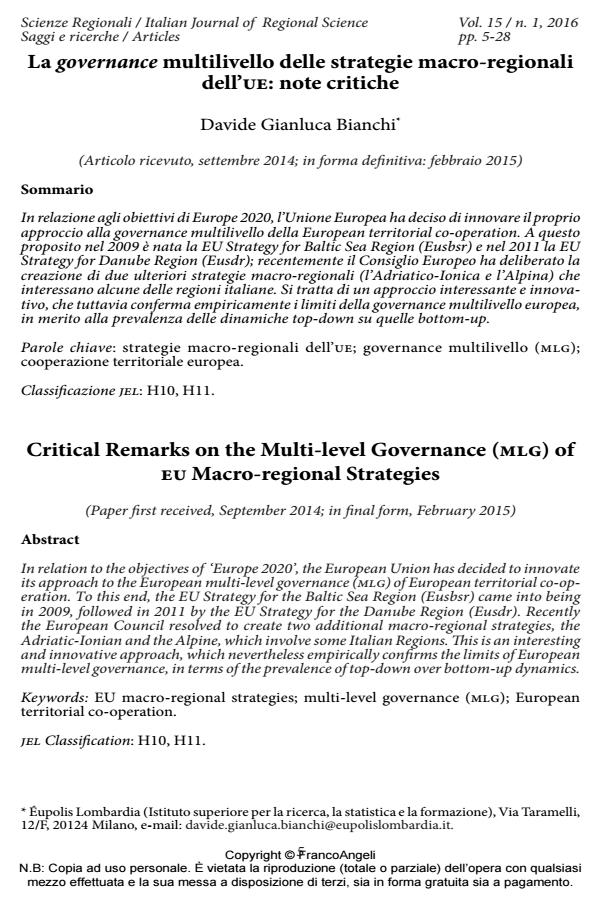La governance multilivello delle strategie macro-regionali dell’ue: note critiche
Titolo Rivista SCIENZE REGIONALI
Autori/Curatori Davide Gianluca Bianchi
Anno di pubblicazione 2016 Fascicolo 2016/1
Lingua Italiano Numero pagine 23 P. 5-27 Dimensione file 235 KB
DOI 10.3280/SCRE2016-001001
Il DOI è il codice a barre della proprietà intellettuale: per saperne di più
clicca qui
Qui sotto puoi vedere in anteprima la prima pagina di questo articolo.
Se questo articolo ti interessa, lo puoi acquistare (e scaricare in formato pdf) seguendo le facili indicazioni per acquistare il download credit. Acquista Download Credits per scaricare questo Articolo in formato PDF

FrancoAngeli è membro della Publishers International Linking Association, Inc (PILA)associazione indipendente e non profit per facilitare (attraverso i servizi tecnologici implementati da CrossRef.org) l’accesso degli studiosi ai contenuti digitali nelle pubblicazioni professionali e scientifiche
In relazione agli obiettivi di Europe 2020, l’Unione Europea ha deciso di innovare il proprio approccio alla governance multilivello della European territorial co-operation. A questo proposito nel 2009 è nata la EU Strategy for Baltic Sea Region (Eusbsr) e nel 2011 la EU Strategy for Danube Region (Eusdr); recentemente il Consiglio Europeo ha deliberato la creazione di due ulteriori strategie macro-regionali (l’Adriatico-Ionica e l’Alpina) che interessano alcune delle regioni italiane. Si tratta di un approccio interessante e innovativo, che tuttavia conferma empiricamente i limiti della governance multilivello europea, in merito alla prevalenza delle dinamiche top-down su quelle bottom-up.
Parole chiave:Strategie macro-regionali dell’ue; governance multilivello (mlg); cooperazione territoriale europea.
Jel codes:H10, H11.
- Implementing the green infrastructure concept in practice: an example of the EU-strategy for Alpine Region Naja Marot, Barbara Kostanjšek, Nadja Penko Seidl, Joern Harfst, in Journal of Environmental Policy & Planning /2024 pp.325
DOI: 10.1080/1523908X.2024.2383685
Davide Gianluca Bianchi, La governance multilivello delle strategie macro-regionali dell’ue: note critiche in "SCIENZE REGIONALI " 1/2016, pp 5-27, DOI: 10.3280/SCRE2016-001001